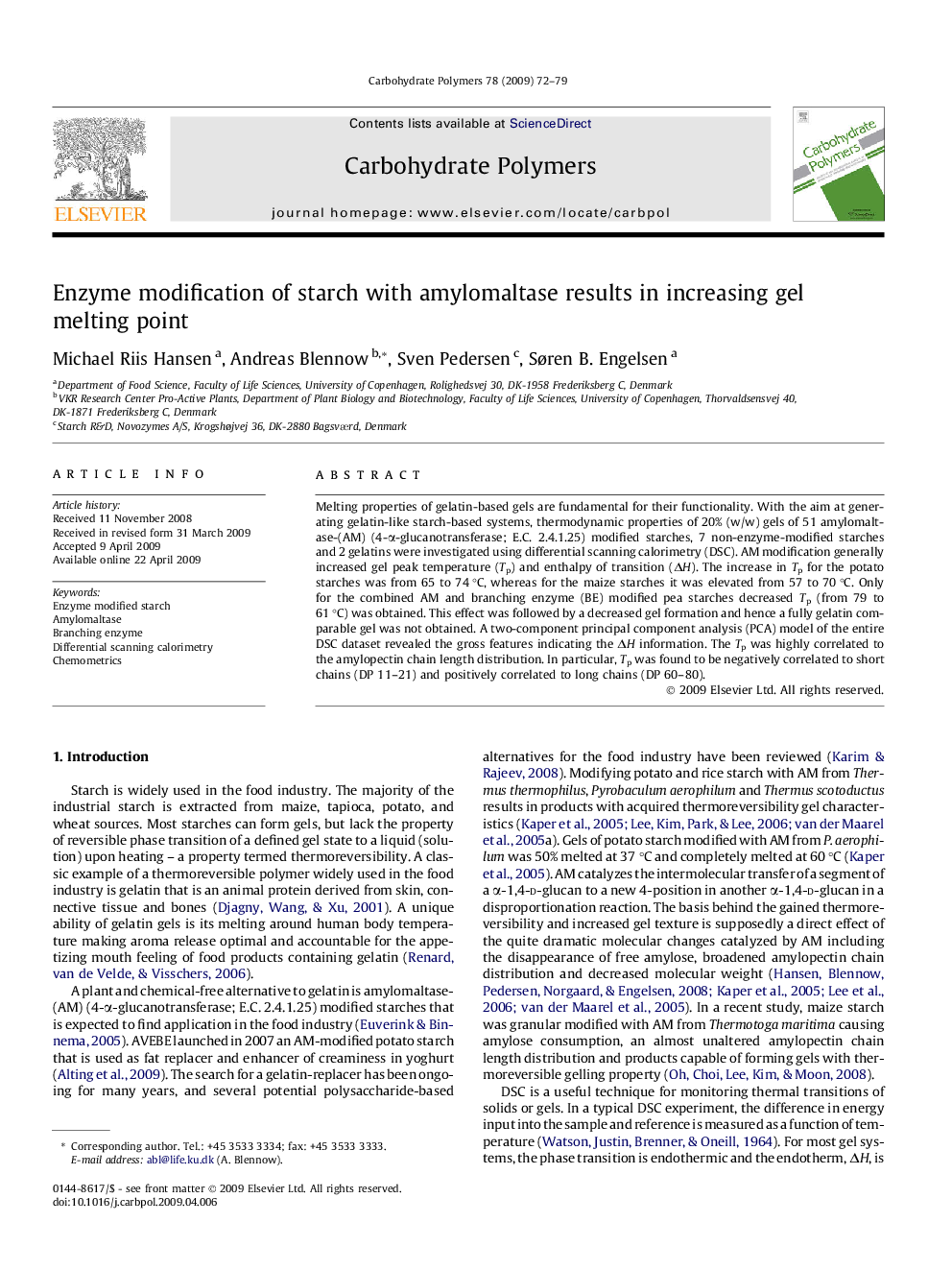| Article ID | Journal | Published Year | Pages | File Type |
|---|---|---|---|---|
| 1384115 | Carbohydrate Polymers | 2009 | 8 Pages |
Melting properties of gelatin-based gels are fundamental for their functionality. With the aim at generating gelatin-like starch-based systems, thermodynamic properties of 20% (w/w) gels of 51 amylomaltase-(AM) (4-α-glucanotransferase; E.C. 2.4.1.25) modified starches, 7 non-enzyme-modified starches and 2 gelatins were investigated using differential scanning calorimetry (DSC). AM modification generally increased gel peak temperature (Tp) and enthalpy of transition (ΔH). The increase in Tp for the potato starches was from 65 to 74 °C, whereas for the maize starches it was elevated from 57 to 70 °C. Only for the combined AM and branching enzyme (BE) modified pea starches decreased Tp (from 79 to 61 °C) was obtained. This effect was followed by a decreased gel formation and hence a fully gelatin comparable gel was not obtained. A two-component principal component analysis (PCA) model of the entire DSC dataset revealed the gross features indicating the ΔH information. The Tp was highly correlated to the amylopectin chain length distribution. In particular, Tp was found to be negatively correlated to short chains (DP 11–21) and positively correlated to long chains (DP 60–80).
